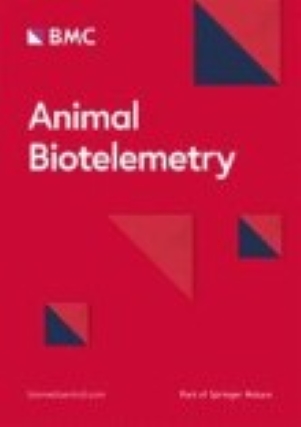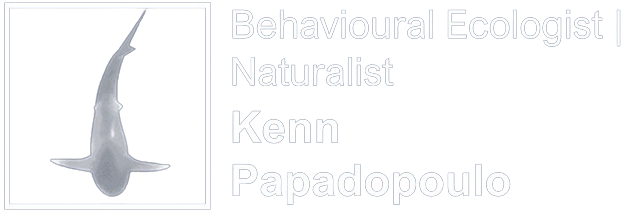Publications




Published

5. Papadopoulo, K., Hillinger, A., Mucientes, G. et al. First insights into the spatial behaviour of Octopus vulgaris in the wild using acoustic telemetry. Anim Biotelemetry 12, 16 (2024). https://doi.org/10.1186/s40317-024-00361-6
Octopuses are amongst the most fascinating animals in our oceans; however, while their intricate behaviours are often studied in laboratory settings, basic aspects of their movement ecology remain unstudied in the wild. Focusing on the socio-economically important common octopus (Octopus vulgaris), this study employs, for the first time, acoustic tracking techniques to address knowledge gaps regarding the species spatial ecology within a marine protected area. A total of 24 wild O. vulgaris (13 males, 11 females) were tagged in 2022 in the National Park Maritime-Terrestrial of the Atlantic Islands of Galicia, Spain. Acoustic transmitters were externally attached to the third arm, after testing other body parts (mantle cavity). Males were on average detected on 10 times more occasions than females (49 days in males and five in females). The average activity space in the study area was large in comparison to that determined in similar studies, with 0.16 km2. Activity space between males and females as well as day and night were comparable. Tagged octopuses displayed a crepuscular activity pattern. The location of dens could be established for 15 out of 24 individuals, from which octopuses were observed to undertake regular daytime excursions. Several individuals were also found to occupy more than one den and/or switch their main dens throughout the study duration. First implications and benefits of this approach are discussed.

4.Papadopoulo, K., Villegas-Rios, D., Mucientes, G., Hillinger, A. & Alonso-Fernández, A. (2023).Drivers of the spatial behaviour of the threatened thornback skate (Raja clavata). Aquat. Living Resour.. 36 (2023) 21. https://doi.org/10.1051/alr/2023017
Fish movements are fundamental to their ecology and survival. Understanding the causes and consequences of the spatial behaviour of fish is of high relevance as it provides critical knowledge for conservation purposes. Skate (Rajidae) populations face an unprecedented global decline due to overfishing. In this study, we used acoustic telemetry to track the movements of nine individuals of the near threatened thornback skate (Raja clavata) around the Cies Islands, a small marine protected area in the northwest of the Iberian Peninsula. Our results demonstrate the significant impacts of biotic and abiotic drivers on the spatial behaviour of R. clavata. Overall residency inside the study array was low (0.073). differed between sexes (higher for females) and over the course of the year (peaking in summer). The analysis of the direction of the excursions performed by R clavata individuals revealed high consistency in the exit and entry areas and a strong connectivity with inshore waters connecting with the Ria de Vigo, as compared with offshore waters connecting with the open ocean. Finally, the activity space of R. clavata also varied over the time of the year with a peak in summer. This study provides an important baseline information for understanding the spatial behaviour of R. clavata that can serve as a starting point for planning future conservation actions or studies.

3. Papadopoulo, K., Villegas-Ríos. D., Mucientes, G., Hillinger, A. & Alonso-Fernández. A. (2023). Drivers of behaviour and spatial ecology of the small spotted catshark (Scyliorhinus canicula). Aquatic Conservation: Marine and Freshwater Ecosystems, 33(5), 443-457. https://doi.org/10.1002/aqc.3943
Shark populations have suffered dramatic declines across the world as a result of overfishing. Marine protected areas (MPAs) can help restore overfished populations: however, their effectiveness largely relies on understanding the ecology of the targeted species. This study investigated the spatial ecology of the intensely harvested but understudied small spotted catshark (Scyliorhinus canicula) through acoustic telemetry in the Cies Islands, a small MPA in the north-west of the Iberian Peninsula. There were significant effects of diel, seasonal cycles, biotic (sex and total length) and abiotic (bottom sea temperature) variables on the spatial behaviour of S. canicula. The mean residency index was low (0.27) and movement patterns suggested a strong connection with inshore waters. While the probability of presence in the study area was mainly driven by sex (i.e. greater for females), a drastic increase in activity was observed at night (compared with daytime hours). The activity space decreased with larger body sizes. Warmer waters were related to higher activity levels and larger activity spaces. This study provides essential knowledge of the spatial behaviour of S. canicula, with significant implications for the conservation and management of this species. The results indicate that small MPAs may fail to protect the whole range of movements of S. canicula, but suggest a larger protection potential for females. To be effective for S. canicula conservation. MPAs should be appropriately sized and designed for the ranging behaviour of the target species in order to provide total protection. Temporal restrictions on fishing at night mirroring the peak activity pattern of S. canicula could be implemented to limit the probability of its capture.
2. Akkaya, A., Velez, N., Papadopoulo, K., et al. (2021). Bottlenose dolphins of Montenegro: Abundance Estimation and Residency Patterns. International Workshop on Metrology for the Sea: Learning to Measure Sea Health Parameters (MetroSea). https:// doi.org/10.1109/metrosea52177.2021.9611636
The Bottlenose dolphin (Tursiops truncatus) suffers from the lack of research in the Southern Adriatic Sea. In 2012. a decline of 50% of bottlenose dolphins population in the Mediterranean Sea was reported. In order to further our understanding of the spatial ecology of bottlenose dolphins in the southern Adriatic Sea, a four-year photo-identification study (starting in 2016) was carried out in Montenegro. Our results showed no permanent residency in Montenegro of any identified individual. Despite the low site fidelity, certain individuals were sighted each year throughout the survey. Key natural habitats for bottlenose dolphins were found all along the Montenegrin coast with notable preferences for Ulcinj, Bar, and the Boka Kotorska Bay. Although the lack of data in the previous decade prevented us from inferring population trends, annual abundance estimation revealed a constant decline from 116±17 in 2017 to 79±21 in 2019. The current study provides critical information on the population status of bottlenose dolphins in Montenegro, with a worrying decline recorded between 2016 and 2019 which could be attributed to the natural causes and/or increased human activities in Montenegro, ranging from coastal destruction to oil and gas explorations. Future research has to assess the present threats on the species while following a transboundary approach to understand the home ranges of species and to investigate the presence of possible habitat shifts.

1. Briand, W., Dao, O., Garnier, G., Guegan, R., Marta, B., Maupu, C.. Miesch, J., Papadopoulo, K., et al. (2018). Dégradation d’un anticancéreux dans les eaux usées. Médecine/Sciences. 34(12). 1111-1114. https://doi.org/10.1051/medsci/2018304
IGEM (pour international genetically engineered machine) est un concours international autour de la biologie synthétique réunissant des étudiants de toutes disciplines (mathématiques, physique, biologie, arts, etc.). « L’objectif est de construire un systéme biologique fonctionnel complexe, en assemblant des composants individuels moléculaires simples et standardisės (fragments d’ADN), appelés briques biologiques » (biobriques). sorte de « legos moléculaires, entreposés au MIT (Massachusetts Institute of Technology) (le registry of standard biological parts contient environ 20 000 biobriques). C’est une démarche proche de celle de l’ingénieur qui assemble des circuits électroniques». En 2004, lors de sa création par le MIT (→). la compétition IGEM regroupait une quarantaine de projets: 14 ans plus tard, elle accueille 350 équipes (6 000 étudiants, avec leurs instructeurs) issues des universités du monde entier. Elle culmine en un Giant Jamboree1 de quatre jours à Boston en novembre, au cours duquel les équipes présentent leur projet. Le « wiki » de la compétition (www.igem.org) présente l’ensemble des projets ainsi que le palmarès. Cette année, ont été décernées 114 médailles d’or. 68 d’argent et 107 de bronze. Neuf équipes françaises étaient engagées.




